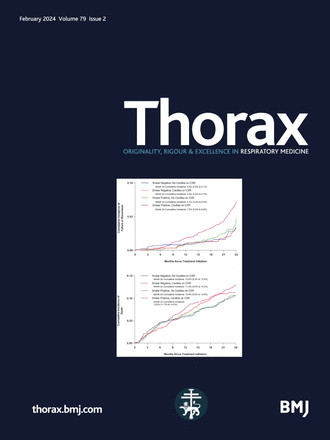CD206+ macrophages are relevant non-invasive imaging biomarkers and therapeutic targets in experimental lung fibrosis
IF 9
1区 医学
Q1 RESPIRATORY SYSTEM
引用次数: 0
Abstract
Background Interstitial lung diseases (ILDs) include a large number of diseases associated with progressive pulmonary fibrosis (PPF), including idiopathic pulmonary fibrosis (IPF). Despite the rarity of each of the fibrotic ILDs individually, they cumulatively affect a considerable number of patients. PPF is characterised by an excessive collagen deposition leading to functional decline. Objectives Therapeutic options are limited to nintedanib and pirfenidone which are only able to reduce fibrosis progression. CD206-expressing M2 macrophages are involved in fibrosis progression, and whether they may be relevant therapeutic targets or biomarkers remains an open question. Results In our study, CD206+ lung macrophages were monitored in bleomycin-induced lung fibrosis in mice by combining flow cytometry, scRNAseq and in vivo molecular imaging using a single photon emission computed tomography (SPECT) radiopharmaceutical, 99mTc-tilmanocept. The antifibrotic effect of the inhibition of M2 macrophage polarisation with a JAK inhibitor, tofacitinib, was assessed in vivo. We demonstrate that CD206-targeted in vivo SPECT imaging with 99mTc-tilmanocept was able to accurately detect and quantify the increase in CD206+ macrophages from early to advanced stages of experimental fibrosis and ex vivo in lung biopsies from patients with IPF. CD206-targeted imaging also specifically detected a decrease in CD206+ lung macrophages on nintedanib and tofacitinib treatment. Importantly, early in vivo imaging of CD206+ macrophages allowed the prediction of experimental lung fibrosis progression as well as nintedanib and tofacitinib efficacy. Conclusions These findings indicate that M2 macrophages may be relevant theranostic targets for personalised medicine for patients with PPF. Data are available upon reasonable request.CD206+ 巨噬细胞是实验性肺纤维化的相关非侵入性成像生物标记物和治疗靶标
背景间质性肺疾病(ILD)包括大量与进行性肺纤维化(PPF)相关的疾病,其中包括特发性肺纤维化(IPF)。尽管每种纤维化 ILD 单独发病的情况并不多见,但它们累积起来会影响相当多的患者。PPF 的特点是胶原过度沉积,导致功能衰退。治疗目标 治疗方案仅限于宁替达尼(nintedanib)和吡非尼酮(pirfenidone),这两种药物只能缓解纤维化的进展。表达 CD206 的 M2 巨噬细胞参与了纤维化的进展,它们是否可能成为相关的治疗靶点或生物标志物仍是一个未决问题。结果 我们的研究结合流式细胞术、scRNAseq 和使用单光子发射计算机断层扫描(SPECT)放射性药物 99mTc-tilmanocept 的体内分子成像,监测了博莱霉素诱导的小鼠肺纤维化过程中的 CD206+ 肺巨噬细胞。我们在体内评估了 JAK 抑制剂托法替尼抑制 M2 巨噬细胞极化的抗纤维化效果。我们证明,使用99m锝-替曼诺受体的CD206靶向体内SPECT成像能够准确检测和量化从实验性纤维化早期到晚期的CD206+巨噬细胞的增加情况,以及IPF患者肺活检组织的体内外情况。CD206靶向成像还特异性地检测到了宁替尼和托法替尼治疗后CD206+肺巨噬细胞的减少。重要的是,CD206+巨噬细胞的早期体内成像可以预测实验性肺纤维化的进展以及宁替尼和托法替尼的疗效。结论 这些研究结果表明,M2巨噬细胞可能是PPF患者个性化用药的相关治疗靶点。如有合理要求,可提供相关数据。
本文章由计算机程序翻译,如有差异,请以英文原文为准。
求助全文
约1分钟内获得全文
求助全文
来源期刊

Thorax
医学-呼吸系统
CiteScore
16.10
自引率
2.00%
发文量
197
审稿时长
1 months
期刊介绍:
Thorax stands as one of the premier respiratory medicine journals globally, featuring clinical and experimental research articles spanning respiratory medicine, pediatrics, immunology, pharmacology, pathology, and surgery. The journal's mission is to publish noteworthy advancements in scientific understanding that are poised to influence clinical practice significantly. This encompasses articles delving into basic and translational mechanisms applicable to clinical material, covering areas such as cell and molecular biology, genetics, epidemiology, and immunology.
 求助内容:
求助内容: 应助结果提醒方式:
应助结果提醒方式:


